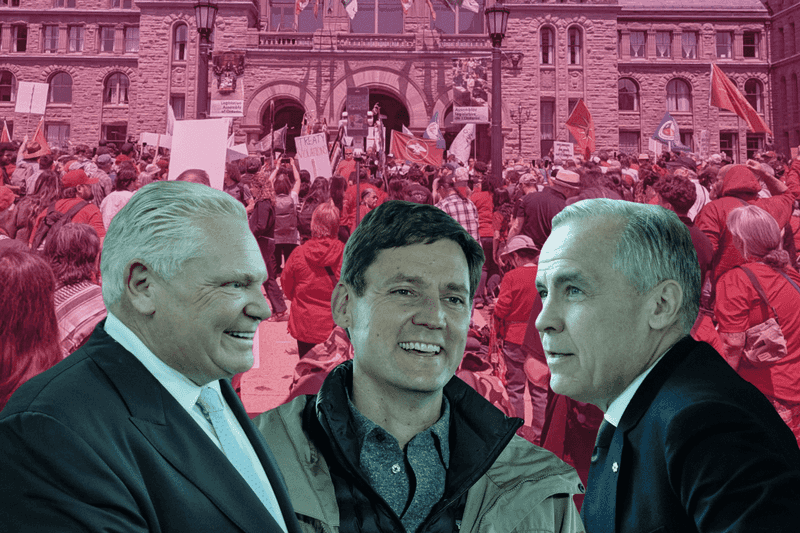
Much has been made of the New International Economic Order (NIEO) since its formal announcement in the UN General Assembly on May Day nearly fifty years ago. As the most sustained attempt to reconfigure international relations since the establishment of the United Nations and Bretton Woods systems after the Second World War, the project served as a lodestone for a remarkably wide range of debates about the law, politics, and political economy of decolonization during the 1970s and into the 1980s. At its core lay a series of demands for greater aid, debt-relief and technology transfer, as well as a desire to facilitate rapid industrialization, secure strong rights to nationalize assets of foreign investors, normalize preferential treatment in international trade for developing countries, institute mechanisms to regulate the activities of multinational corporations, and provide restitution for resources depleted through colonialism and occupation.
Some elements of this enterprise had been in circulation since the end of the Second World War. In particular, various models of resource sovereignty — the idea that states enjoy ultimate authority over all natural resources located in their territories — had begun to gain traction in legal and diplomatic circles after 1945. This idea included the controversial claim that states, particularly those deemed ‘developing’, possessed an international right to expropriate and nationalize foreign-owned property in their jurisdiction, with compensation being determined solely or largely by their own officials. What was increasingly termed ‘permanent sovereignty’ over natural resources figured prominently in a series of General Assembly resolutions, beginning in the early 1950s and reaching a first pinnacle in the 1962 Declaration on Permanent Sovereignty over Natural Resources, which recognized a right to undertake nationalization so long as ‘appropriate compensation’ was provided — this formula having deliberately been left vague and open to interpretation. The idea was also central to debates in the Raúl Prebisch-led UN Conference on Trade and Development (UNCTAD) in the mid- to late 1960s and during meetings of the Non-Aligned Movement and Group of 77 in the late 1960s and early 1970s, where discussions often circled around questions of neo-colonialism, uneven development, and the long-term decline in the terms of trade for commodity producers.
Yet it was only in 1974 that the NIEO emerged as a legally formalized programme to reorganize the world economy, with resource sovereignty as its centrepiece. Many oil-producing countries had by then already won increased leverage through nationalizations, not to mention the sharp rise in prices resulting from the 1973–74 oil embargo. Aside from urging investors to employ their own citizens and minimize repatriation of profits, capital-importing states frequently pressed for a strong right of nationalization, recognized in domestic legislation, exercisable by domestic officials, and subject to legal interpretation solely by domestic authorities. They argued that control of natural resources constituted an essential element of statehood, and that it involved the right to seize foreign assets in addition to pursuing more prosaic strategies such as acquiring majority interests in subsidiaries of multinational corporations. By contrast, capital-exporting states generally opposed such moves, claiming that they undermined investor rights and were inimical to economic growth in host countries, which were likely to experience capital flight as a direct result. Resisting strong formulations of the concept of resource sovereignty, they maintained that no rule or principle of international law could justify expropriation of foreign investors’ assets without adequate compensation, in an amount to be determined through international arbitration or on the basis of international standards they supported.
The immediate outcome of this drive to reconfigure the world economy registered on the plane of international law. On the symbolically charged date of 1 May 1974, the General Assembly adopted the Declaration on the Establishment of a New International Economic Order and its accompanying Programme of Action on the Establishment of a New International Economic Order. They were followed by an ambitiously titled Charter of Economic Rights and Duties of States seven months later. In connection with the crucial question of resource sovereignty, the charter followed the 1962 resolution in requiring no more than ‘appropriate compensation’ when a foreign investor’s assets were expropriated, nationalized, or otherwise transferred. However, unlike the 1962 resolution, which had required compensation to be determined on the basis of the expropriating state’s domestic law and also “in accordance with international law”, the charter made it clear that compensation was to be determined by domestic courts simply on the basis of “relevant laws and regulations and all circumstances that the State considers pertinent.” As with nearly all other General Assembly resolutions, the NIEO resolutions were legally non-binding. Even so, many ‘First World’ states cast negative votes or chose to abstain.
Like its founding instruments, most champions and enthusiasts of the NIEO offered little in the way of an answer to the question of whether or how the programme would further socially equitable redistribution within the ‘Third World’ states that were supposed to be its principal beneficiaries. Driven by the desire of ‘new’ states to ground formal legal independence in substantive economic sovereignty, and to safeguard this sovereignty by expanding relations of South-South cooperation, the project sought to recalibrate an inter-state system interlinked with the capitalist world economy. It stipulated virtually nothing, though, in regard to matters of intra-state distribution. An essentially redistributive project premised upon a revamped global Keynesianism, its rhetoric promised both national honour and common concern, its agenda reflecting the wish of political and legal elites in the ‘global South’ to renegotiate their roles in a world capitalist system dominated by the ‘global North’.
Even with such limitations, the NIEO evaporated shortly after being launched. Its failure was due mainly to concerted opposition from the North Atlantic ruling classes, which co-opted much of its ‘global solidarity’ rhetoric while repudiating what many policymakers and commentators, particularly in the United States, denounced as a form of socialism forced through UN institutions. It helped little that the project was also hamstrung by internal contradictions. Its relative indifference to questions of intra-state distribution rendered it vulnerable to charges of elite capture, laying the foundations for the World Bank-sponsored ‘turn’ to prioritizing ‘basic needs’ in development policy and poverty-reduction strategy in the late 1970s. The tension between countries rich in oil and other resources and countries without large quantities of export commodities (given to characterization in UN governance jargon as ‘least developed’) proved to be significant, despite efforts by the Organization of the Petroleum Exporting States to provide specific assistance to offset high oil prices. Representatives of advanced capitalist countries like Henry Kissinger were able to exploit such sources of friction, partly by funnelling many NIEO-related debates into a ‘Conference on International Economic Cooperation’ convened in 1975 to discuss issues of energy, finance, development, and raw materials, a multi-year process facilitating a largely fruitless ‘North-South dialogue’. The fourth UNCTAD conference, held in 1976, introduced an ‘integrated programme for commodities’ which encouraged the conclusion of agreements to regulate the pricing of key commodities. It also called for new buffer stocks, export quotas, compensatory financing facilities, multilateral supply-management measures, and diversification of trade and production in developing countries. Even then, the programme’s centrepiece, a ‘common fund for commodities’, was barely able to eke out a marginal existence as a small pool of resources when it finally became operational in 1989.
Of course, many discerned still more fundamental limitations in the NIEO. As Samir Amin, André Gunder Frank, and a wide range of other Marxist and radical critics pointed out, the project aimed to reform the relations of dependence and exploitation that strung the world together, modifying prevailing dynamics in trade and investment through a process of global collective bargaining. It was in this spirit that Algeria’s Houari Boumediene (and international lawyers like Mohammed Bedjaoui) joined forces with Mexico’s Luis Echeverría Álvarez (and international lawyers like Jorge Castañeda) and many others to militate for technology transfer, rapid industrialization, greater regulatory control over multinational corporations, and reduced barriers of entry for goods produced by developing countries. These and other demands were palliative measures in response to the cascade of crises that comprised the 1970s, a decade during which much of the world, ‘North’ and ‘South’ alike, experienced declining rates of profit, rising debt burdens, increased energy costs, and high levels of inflation and unemployment. Direct opposition to capitalist production and exchange, and the market structures it safeguarded, was simply not on the table. For most Marxists, it was obvious that the NIEO, though invaluable in many respects, was fundamentally reformatory, not revolutionary, in character — akin in some ways to the nineteenth-century Factory Acts Marx famously analyzed in the first volume of Capital.

When representatives from twenty-two states met in Cancún in October 1981 for a ‘North-South Summit’, conditions had changed significantly since the heady days of 1974. Channeling widespread dissatisfaction among the North Atlantic ruling classes with the NIEO’s commitment to an expansive international right to undertake nationalization, Ronald Reagan and Margaret Thatcher were both on hand to repudiate NIEO-style talk of ‘massive transfers’, rejecting even the modest (and muddled) recommendations the World Bank-supported ‘North-South Commission’, chaired by former West German Chancellor Willy Brandt, had made in an attempt to salvage some of the project’s less controversial elements, such as certain mechanisms for sharing technologies and stabilizing commodity markets. This reaction to Brandt’s commission, and what remained of the NIEO, was not shared by all capitalist countries. Austria, for instance, cited its experience with the Marshall Plan as evidence that large-scale investment in developing countries was needed to accelerate development. On behalf of France, François Mitterrand made some noise about the need to organize world markets and undertake a further round of ‘global negotiations’. But Reagan waxed lyrical about the need ‘to liberate individuals by creating incentives to work, save, invest, and succeed’, making it clear that his interests lay in ‘opening up markets’, fostering a ‘climate for private capital flows’, and avoiding ‘misguided policies that restrain and interfere with the international marketplace or foster inflation’. Similarly, Thatcher affirmed her determination to ‘provide maximum freedom for the private sector’, reiterating the importance of the ‘open trading system’ and urging others to avoid compromising ‘the effectiveness or integrity of organizations like the World Bank and the IMF’.
Less than a year after Mexican President José López Portillo chaired the summit along with Canadian Prime Minister Pierre Trudeau, his finance minister, Jesús Silva-Herzog, found himself issuing a public declaration that Mexico could no longer service its debts, much of which had been accrued over the past decade to fund the country’s oil-driven industrialization. The debt crisis—related to the decision of the chair of the US Federal Reserve to raise interest rates as part of an effort to combat inflation—was severe, rippling across the region and well beyond. When financial institutions like the IMF responded by affirming ‘fiscal discipline’, privatization, trade liberalization, and ‘tax reform’, most lost hope for the NIEO agenda, even if bits and pieces of its initial programme, like the idea of an international right to development, continued to spill over into law for years to come.
Intellectual historian Nils Gilman has suggested that the NIEO might best be understood as a kind of ‘unfailure’—a movement that may have met its demise, both ideationally and institutionally, but which has continued to enjoy a sort of afterlife as ‘an idiom for future generations to articulate their own hopes and dreams’. The language of ‘unfailure’ is somewhat misleading; the NIEO project, qua project, was nothing short of disastrous, even by its own standards. But the basic sentiment is well-placed: inasmuch as calls to ‘decolonize’ international law and politics are heard with increased urgency today, we continue to sift, even if for the most part unknowingly, through the wreckage of the NIEO, the most sustained attempt to forge a new order for an ostensibly post-imperial world.
Given the lofty legal and moral rhetoric in which it was encased, it is unsurprising that the NIEO should have attracted renewed attention in recent years. That the project traded on the popularity of contemporaneous theories of dependency, unequal exchange, and core-periphery dynamics makes it readymade for romanticization in an age bursting at the seams with all manner of claims about ‘populism’, ‘multipolarity’, and the ‘end of neoliberalism’. It is all the more important then to bear in mind that the NIEO’s chief objective was to recalibrate the international division of labour in the interests of an insurgent ‘Third World’, mainly by redistributing rights and resources through the medium of democratized international institutions and a correspondingly transformed international law. This was a noble goal, its commitment to resource sovereignty the economic culmination of the post-1945 wave of national liberation. But it was also a deeply limited one. The debates and movements of the 1970s differ significantly from those that dominate the current conjuncture, with its investor-state arbitrations and ‘mega-regional’ trade agreements. Yet the temptation to resuscitate yesterday’s Keynesian tools in order to reconfigure the law and political economy of today’s world remains strong. Ultimately, we should set our sights much higher than any NIEO-style programme, however ‘green’ the ‘new deals’ it may promise to usher in. When all is said and done, we have nothing to lose but the chains that bind us to a dying world.

Umut Özsu is Associate Professor at Carleton University. This post draws upon material from the author’s forthcoming book, Completing Humanity: The International Law of Decolonization, 1960–82, to be published by Cambridge University Press in 2023.



